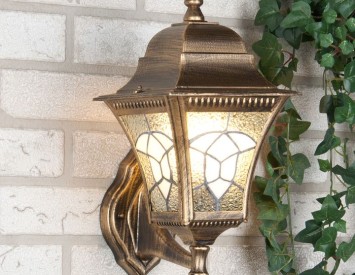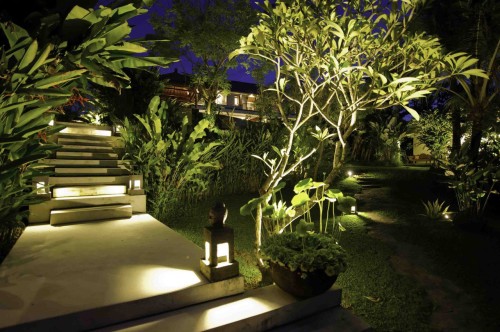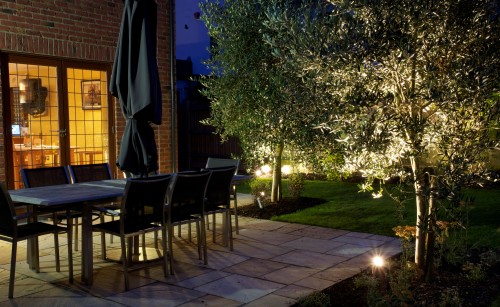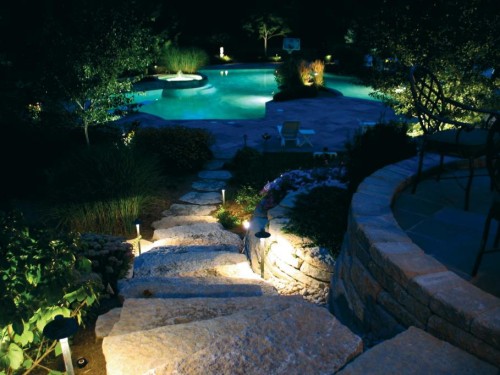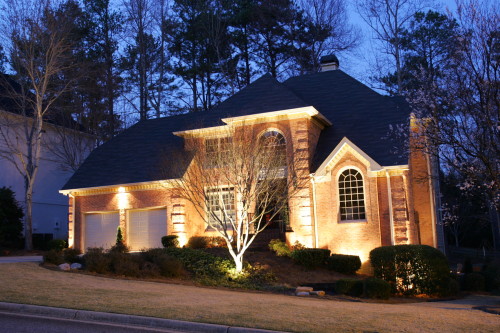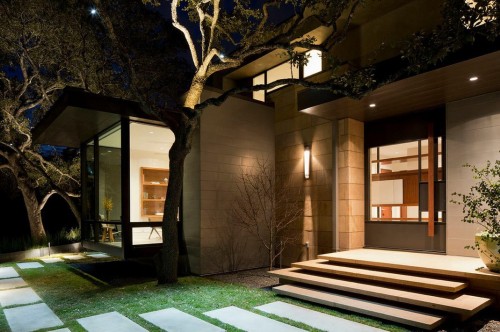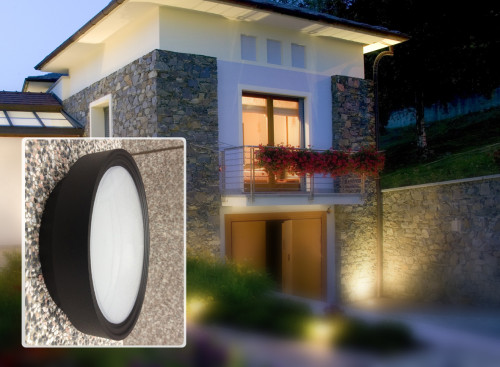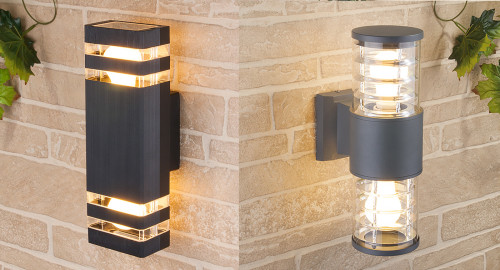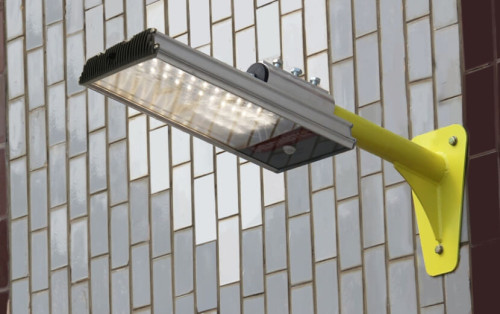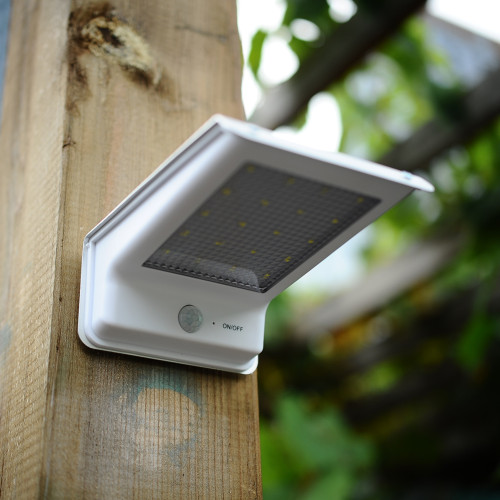Street lamp with motion sensor is a very convenient device that allows you to save electricity. Such a flashlight lights up only when it is necessary for a person, the rest of the time the lamp is in an extensive state. More about the types and installation of such lamps you will learn from our article.
Content
Types of motion sensors
There are several types of motion sensors installed on luminaires. The most common are the following:
- Microwave detectors - they react even to the most minor movements. They differ in small dimensions, their work does not depend on the ambient air temperature or the degree of its humidity. Such sensors are capable of responding to a person not only in close proximity, but then when it is behind the glass, thin door or partition. They should be attributed to their minuses, as well as periodic episodes of false response. Microwave sensors produce microwave radiation, which can be dangerous to human health. To purchase a secure detector, choose an option with a power density not higher than 1 MW / cm².
- Ultrasonic sensors, like the previous analog, do not depend on the ambient temperature and humidity. They are not afraid of rain, snow and fog, as well as high dusting air. With all its positive properties, ultrasound traps are characterized by an acceptable cost. The disadvantages of such detectors include what they do not react to a smooth movement of a person have a small range. Among other things, ultrasound is tracked by animals, so that pets can be uncomfortable near such devices.
- Infrared sensors are completely safe for both people and animals. Different with high range and large angle detection of the subject. Among the minuses is to highlight the fact that the work of such detectors depends on weather conditions: the sun, air temperature, humidity, precipitation. Such traps often give a false response to warm air and, as a rule, do not notice the subjects protected from infrared radiation.
In addition to the above options on sale you can find both combined structures that combine the characteristics of several types of sensors.
Speaking about movements of motion, they can be classified for such types:
- Wired - are considered the cheapest option. Their installation is made directly during the repair process, which allows you to hide the wires under the lining. Such sensors are used where aesthetics is not important, for example, in production or objects requiring round-the-clock security.
- A signal that captures wireless detectors has a type of radio waves. Such designs are mounted in residential buildings, in country houses or in the entrances.
- Hidden sensors are both wired and wireless. Their main scope of use is protected or secret objects.
At the place of installation, the detectors are divided into ceiling and walls.
Principle of operation of motion trap
The principle of operation of the sensors is quite simple. The infrared trap reacts to thermal radiation that produces a subject passing by the subject. This signal enters the lenses or special segmented mirrors, then passing through them, it falls inside the device on the sensor. This sensor also performs the function of turning on the device.
Ultrasound-type models produce a certain frequency waves. As a rule, this indicator ranges from 20 to 60 kHz. Emitted waves fall on the object and are reflected with the other frequency. Receiving a reflected wave of another frequency, the sensor works, including light.
A microwave detector has a similar principle of operation, only instead of sound, it emits high-frequency waves. Reflecting from the subject, the waves again fall on the sensor sensor, and if the parameter differs from the emitted, the device is activated by turning on light.
Combined devices combine several methods for producing a signal, for example, they are obtained both microwave waves and ultrasound.
How to choose a lamp with a motion trap
The sphere of using street lamps with a motion sensor is quite wide. They are used for cottages, residential private and apartment buildings, to illuminate the territories near the production structures, in park areas, etc. Motion's catcher themselves can perform not only lighting functions, but also others, for example, the inclusion of alarm or air conditioning system, opening the doors, activation of the observation chamber, etc.
Street lamps with a motion sensor and illumination have the following technical characteristics:
- lightness that fluctuates from 2 to 1000 lux;
- distance detection, the maximum indicator is 15 m;
- operating voltage - from 220 to 240 V, current frequency is 50 Hz;
- the speed of operation is from 0.5 to 1.5 m / s. This characteristic depends on whether the sensor will capture the movement if the subject moves too quickly or too slowly;
- the angle of dispersion of the light flux and the power of its radiation;
- operating temperature at which the device can function without interruptions;
- color temperature of radiation;
- casting zone. For example, the street wall lamp with a motion sensor has an angle of view from 120 ° to 180 °, whereas for the ceiling device this indicator is 360 °.
Lamps with motion detectors are most often equipped with delay timers, whose response time ranges from 2 seconds to 8 minutes. The time during which the device will perform the entrusted function, is installed using the regulator. Using the switch, you can adjust the illumination. All devices also differ in the number of LEDs and the protection class.
A very important component of the entire system is a lens from which the working capacity of the structure depends. With the lens you need to contact very carefully and carefully. The number of lenses also depends on the specific lamp, the maximum indicator is 60 pieces. The more lenses, the more sensitive is the sensor, and the wider there are their area, the greater the zone of the instrument.
Choosing a lamp with a motion detector, the place of use should be taken into account. It can be a parking area or a small household plot, a closed room or a canopy located on the street, etc. Consider the method of fastening the device and the degree of its protectedness from external factors, power and dimensions.
Varieties of LED lighting devices
For the purpose, the lamps are classified as follows:
- intended for external use - lights with motion sensors;
- household - used in residential buildings and utility rooms;
- designed for offices or production buildings.
The devices are divided into the color of the light stream. Depending on this characteristic, they are:
- with yellow glow. Such radiation is best suited for domestic use;
- with white neutral luminescence - such lamps can most often meet in offices and in production shops;
- with cold white light - the perfect option for lighting streets and parks;
- multicolored glow is used to create decorative backlight.
Lamps distinguish both constructive features:
- Lanterns are devices that are best suited to illuminate alleys, streets, parks and tracks, individual sections.
- Floodlights with motion sensors give a directional flow of light, which is intended to select some zones or objects. Using the spotlights, architectural illumination is created, advertising objects, signs with numbers and addresses of buildings, etc. are highlighted.
- LED lamps that are used as a replacement of conventional incandescent bulbs or fluorescent devices. LED lamps are used in residential, household, industrial premises, in the entrances, etc.
Motion sensors can be built directly inside the lamp, are located on the instrument in a separate case or in general to be independent and mounted anywhere regardless of the lamp.
Installing a street LED lamp with motion sensor
The method of installing the lighting device directly depends on the specific model, its technical and design characteristics, as well as for purpose.
Mount the lamp on the street alone or with the involvement of professional electricians. If you want to save and do not pay to strangers for work, connect the device with your own hands, especially since there are no special difficulties in this.
Installation of a device with a sensor built-in or fixed on the type lamp is carried out at a predetermined place where the electrical pipeline is previously connected. When choosing the location of the device, take into account what territories you plan to illuminate, as well as the distance of detection and the sensor trailing zone.
If you install the lamp, the motion detector is located in an independent case, you can mount it at any convenient location, and then connect both instruments using wires.
The scheme of connecting lamps to the power grid is indicated in the accompanying instruction to the product. Sometimes you can connect several motion sensors to one lamp or vice versa - you can connect more than one lighting instrument to one detector. In addition to lamps, a video surveillance camera can be connected to the motion sensor, which will function after switching on light. In any case, when connecting multiple devices to one device, it is important to comply with the maximum permissible load and act within it.
When the lamps are installed on the site, and the sensors are activated, the instruments are adjustable. In this case, setting the direction of light radiation, the sensitivity parameters of the detectors, the level of illumination, the duration of the device after activation, the sensor overview angle in motion, etc.
Having installed on its plot lamps with motion sensors, you will significantly save on electricity consumed and get the opportunity with maximum convenience to control the lighting of various objects on its territory.
Wall street lamps with motion sensor, photo:
